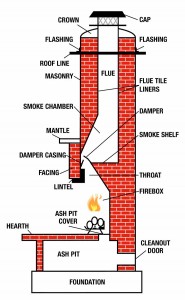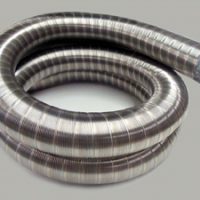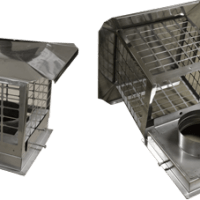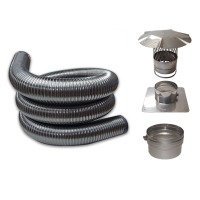How do you clean a Fireplace?
Why do you clean a Fireplace?
Many people love coming home to see a cozy fire in the fireplace. This is always a favorite for special family occasion. Some people only burn wood in the fireplace occasionally while others have a warm fire every evening during the winter months. A fireplace can also be extremely dangerous. According to www.usfa.fema.gov, “Heating fires account for 36% of residential home fires in rural areas every year. Often these fires are due to creosote buildup in chimneys and stovepipes.” The main reason for these fires is carelessness and a lack of cleaning. We will discuss how to clean a fireplace.
How do you clean a Fireplace?
Cleaning and inspecting a fireplace annually can prevent multiple issues. Many homeowners clean their own fireplace chimneys. This is fine as long as you know how to thoroughly and properly clean a fireplace chimney. As seen in the diagram below, there are multiple components to a fireplace and its chimney. 
Once you seal up the opening of the fireplace to prevent dust from escaping, you can proceed to the roof. The first thing you need to know is the size of your chimney flue. The most common sizes for fireplace flues are 8″x13″ and 13″x13″. You will need a wire brush that fits snugly inside the flue. Now you can start by inserting the chimney brush from the top and working your way down. Sometimes if the flue has extra creosote build up, you may need to pass the brush through the flue multiple times.
The most important thing to know when you clean a fireplace.
Look at the above diagram closely. When you clean a fireplace flue, all the highly flammable creosote is not swept down the fireplace floor. It is resting on top of the smoke shelf. This is the most important spot to clean when you clean a fireplace chimney. Now you have a pile of flammable creosote just a few inches above the flame. You will need to reach up into the fireplace with a vacuum hose or other appropriate tool to remove all the creosote. Once you remove all of the creosote that is on the smoke shelf, you now need to sweep out the rest of the firebox and discard of all the ashes. These are the most basic steps in how to clean a fireplace and the chimney.






